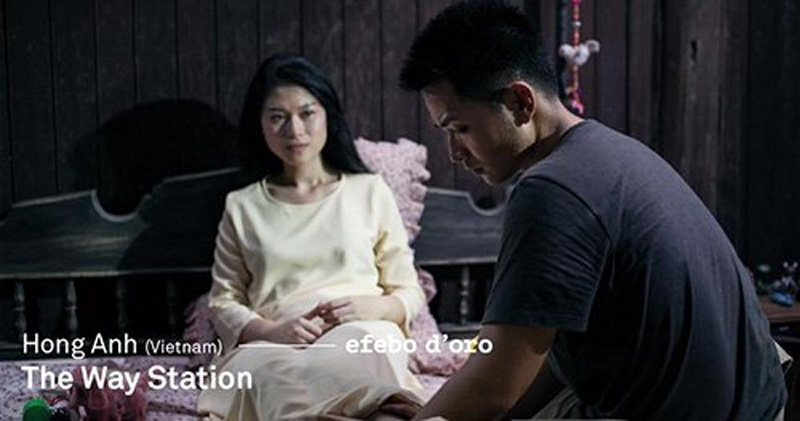
The film "Dao cua dan ngu cu” (or ‘The Way Station’) by director Hong Anh was honored on November 11, with the Efebo D’Oro Miglior film tratto da un libro (Best film based on a book) at the International Efebo d'Oro (Golden Efebo) Award’ award ceremony.

A scene from the film
"The Way Station”.
The International Efebo d’Oro Award, which is organised by
the Research Centre for Cinema and Narrative, was started in November 1978 to
counter the decline of cinema due to television. From its foundation to 2013,
the prize’s ceremony was hosted in the city of Agrigento, then it was moved to
Palermo, Italy.
Every year, the Efebo d’Oro awards a filmmaker for the best
film based on a literary work. The prize has also been officially recognized by
the Italian Ministry of Heritage and Culture.
Earlier, the film ‘The Way Station’ received eight
nominations at the ASEAN International Film Festival and Awards. It was also
honored with the "Best Film” Award, "Best Actor” for Pham Hong Phuoc and
"Best Director of Photography” for People’s Artists Ly Thai Dung at the ASEAN
International Film Festival & Awards (AIFFA Award) 2017 in Malaysia.
It was honoured with the Special Jury Prize at the Eurasia
International Film Festival 2017.
In addition, it also was screened on the Vietnam Night at
the 70th Cannes Film Festival and during a Vietnamese movie week in Spain, May
2017.
The movie is adapted from writer Do Phuoc Tien’s story
titled "Dao cua dan ngu cu” depicting the confusion and uncertainty of the
characters in their journey to look for happiness and the meaning of life.
Source: NDO
Hoa Binh province has carried out multiple programmes and initiatives to revive its cultural heritage which has gradually fallen into oblivion through the ebbs and flows of history.
The most prominent and defining feature in the prehistoric era of Hoa Binh is the Hoa Binh Culture. The Culture was first discovered in Hoa Binh. The significant prehistoric culture represents not only Vietnam but also Southeast Asia and southern China. Through excavations of cave sites in the limestone regions of Hoa Binh, French archaeologist M. Colani introduced the world to a "Stone Age in Hoa Binh province – Northern Vietnam" in 1927. On January 30, 1932, the First Congress of Far Eastern Prehistorians, held in Hanoi, officially recognised the Hoa Binh Culture.
Known as the "Land of Epic History”, Hoa Binh province, the gateway to Vietnam’s northwest, boasts a strategic location and a unique cultural tapestry woven by its ethnic minority communities.
The People's Committee of Luong Son District recently held a ceremony to receive the certificate recognizing Sau Communal House in Thanh Cao Commune as a provincial-level historical and cultural site.
Recognising the importance of cultural heritage preservation in protecting and promoting the value system of Vietnamese culture, and serving socio-economic development in the new period, Party committees and local administrations in Hoa Binh province have identified it as a key task in the cultural development strategy. The province has been making efforts in mobilising resources, creating consensus among people and engaging ethnic communities in preserving and promoting cultural identity.
Hoa Binh province has captured growing attention both domestically and internationally for its distinctive cultural heritage and rich history. Most notably, it has been renowned for its famous Hoa Binh culture, considered the cradle of ancient Vietnamese civilisation. Looking ahead to significant milestones in 2025 and the 140th anniversary of province establishment in 2026, Hoa Binh Newspaper presents a comprehensive overview of the province's development across economic, social, cultural, tourism, and security domains.



